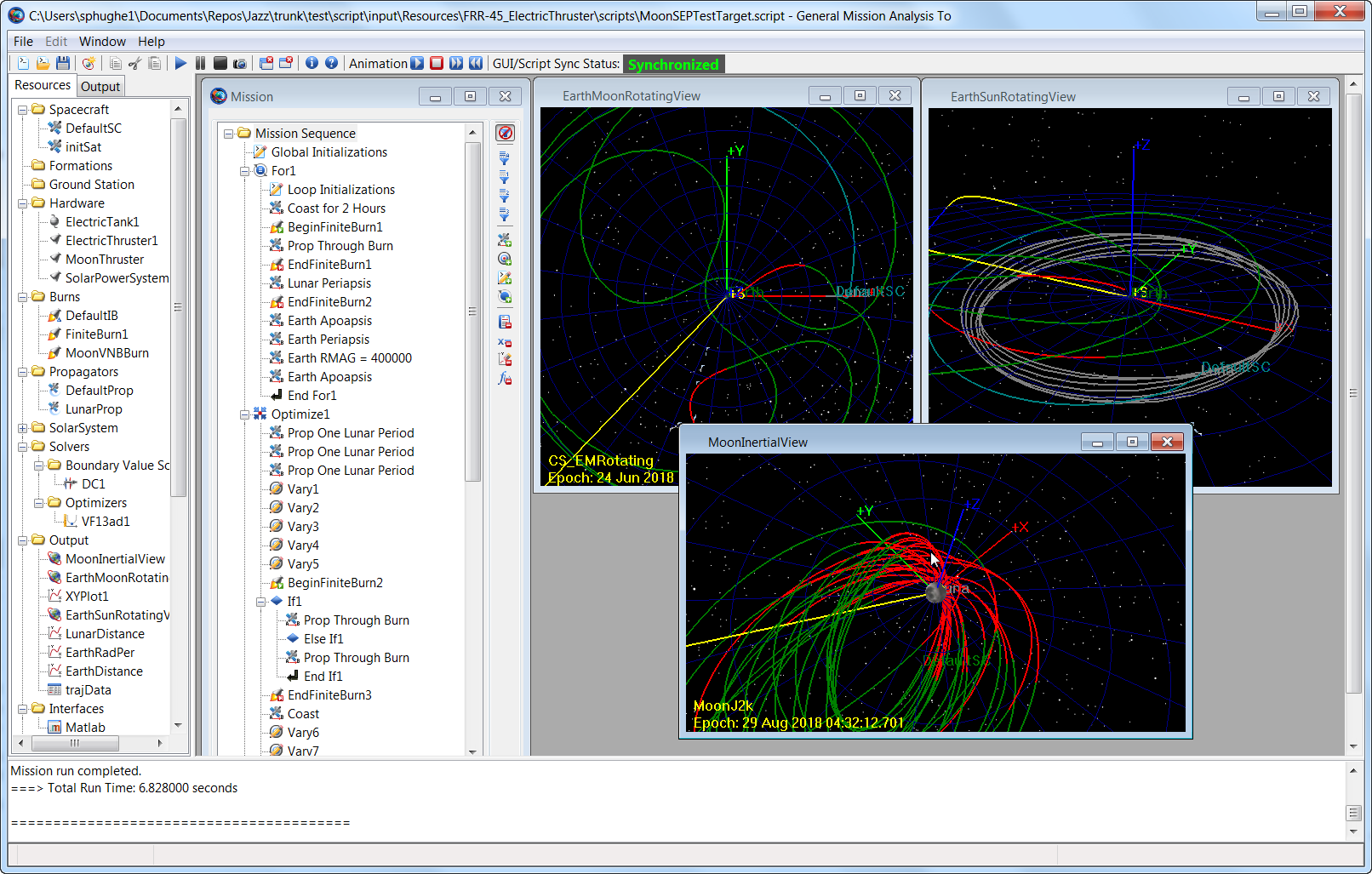| Info |
|---|
The GMAT development team is pleased to announce the release of GMAT version R2018a The binaries are available here. New features in this release include orbit determination improvements, a built-in non-linear optimizer, and numerous bite-sized enhancements. For a complete list of new features, compatibility changes, and bug fixes, see the Release Notes Here is some exciting recent news:
|
Do you want to go to Mars but don't know when to leave or how much to bring? Do you want to land something on the moon? The General Mission Analysis Tool (GMAT) is an open-source space mission analysis tool to answer just those types of questions. GMAT is developed by a team of NASA, private industry, public, and private contributors. GMAT is intended both for real-world engineering design studies and as a tool for education and public engagement in the spirit of the NASA Charter.
This wiki contains many resources for GMAT users and developers. It is intended for collaboration! If you see anything wrong with any of the pages on this wiki, or wish to add GMAT-related information on your own, please feel free to contribute.
GMAT and Space Mission Design
GMAT is designed to model, optimize, and estimate spacecraft trajectories in flight regimes ranging from low Earth orbit to lunar applications, interplanetary trajectories, and other deep space missions. Analysts model space missions in GMAT by first creating resources such as spacecraft, propagators, estimators, and optimizers.
Resources can be configured to meet the needs of specific applications and missions. GMAT contains an extensive set of available Resources that can be broken down into physical model Resources and analysis model Resources. Physical Resources include spacecraft, thruster, tank, ground station, formation, impulsive burn, finite burn, planet, comet, asteroid, moon, barycenter, libration point. Analysis model Resources include differential corrector, propagator, optimizer ,estimator*, 3-D graphic, x-y plot, report file, ephemeris file, user-defined variable, array, and string, coordinate system, custom subroutine, MATLAB function, and data.
Below we illustrate some recent applications using GMAT. A solution is shown that uses a low thrust propulsion system and a cube-sat for a lunar mission.
